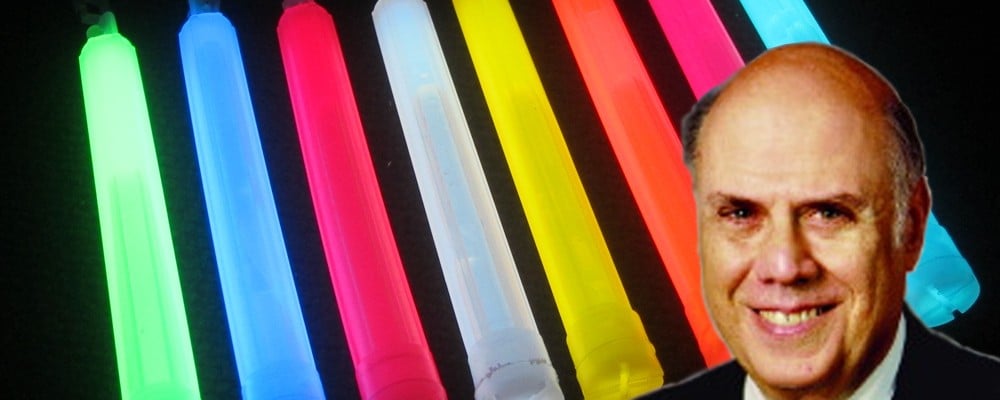If you are familiar with glowsticks, you’d also know that the contents that make the “glow” result from a chemical reaction between a fluorescent dye and other compounds. But did you know that the man behind the chemiluminescent liquid had no idea how famous his discovery was?
Dr. Edwin Chandross found the chemical reaction of glow sticks in 1962. His discovery had been used for several things. However, he did not know that the chemiluminescent objects were popular at concerts until he was interviewed in 2013.
Who is Dr. Edwin Chandross?
Dr. Chandross was born in Brooklyn in the 30s. He was pretty interested in the science behind chemiluminescence while he was at the Massachusetts Institute of Technology.
It fascinated me, I did some bootleg work as a graduate student trying to understand it. Leaving out pyrotechnics, chemical reactions usually produce heat, not light. Why and how did this one emit light?
Dr. Edwin Chandross
Dr. Chandross went on to take a position in Bell Labs by 1959 and was able to test more theories on the subject. Unfortunately, his luminol experiments did not go as planned, but this led him to discover peroxalata esters.
In order to test my theory I needed to prepare a material that would react with hydrogen peroxide to provide the active ingredient. That required using two materials, and the important one turned out to be a volatile derivative of oxalic acid, the chloride.
Dr. Edwin Chandross
He was eventually able to create a test compound that faintly lit up. After a few more experiments, he was finally able to figure out the active luminescent combination. It took him a day to conduct these experiments. (Source: Vice)
How Does the Chemiluminescent Reaction Occur?
As mentioned, the glowing reaction we see in glow sticks is due to a combination of certain compounds and a fluorescent dye. To be specific, here’s what’s going on.
The reaction of fluorophor and hydrogen peroxide is catalyzed by phenyl oxalate to create the glowing liquid. The hydrogen peroxide is encased in a glass ampule and, when broken, mixes with the dye and catalyst. This solution is non-toxic and non-corrosive. It is easily contained in the plastic casing after the reaction. (Source: Vice)
Are Glowsticks Patented Under Dr. Chandross?
When you get a chance to speak with Dr. Chandross, he’d probably play down his discovery and reduce it to mere luck. But at the end of the day, his curiosity and research have made an essential contribution to chemistry.
What may be disappointing is, although Dr. Chandross did discover this reaction, his name is not on any US patents. He went as far as speaking with Bell Labs’ patent attorney, but the company declined to do anything about it. They didn’t think that the experiment would amount to anything.
In the end, Michael A. Rauhut from Cyanamid in Stamford designed a phenyl oxalate ester that created a powerful cold light when mixed with hydrogen peroxide and dye. They called their product Cyalume and then became the trademark name. (Source: Vice)
